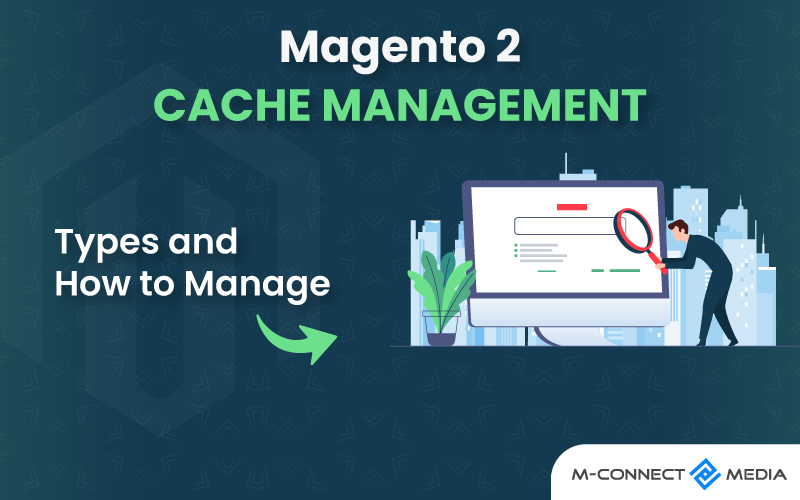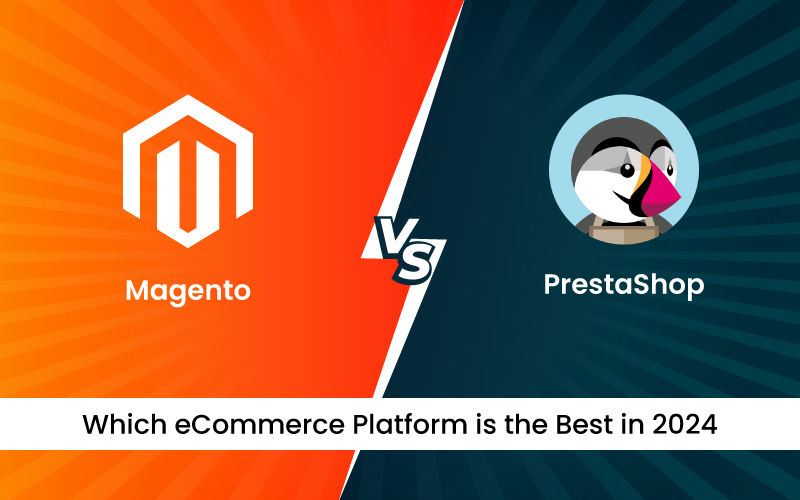Caching is a critical component of any system, particularly one as complex and data-dependent as Magento 2. Magento 2 cache is a collection of pages or sections of pages that are saved to speed up subsequent page loads. A cache saves data so that subsequent requests for that data may be loaded quickly.
Adding more data implies that website may get overcrowded or slower, which can have impact on consumers’ experience. As a result, managing the cache is also required to resolve this issue. Clearing Cache may secure sensitive information while making the program function quicker.
Futhermore, Magento 2 supports various cache types, as we shall explore later in this article. We are going to show you some Magento full page cache management strategies today. You are about to learn about Magento 2 cache types and the tools that are used to manage them.
What is Magento 2 Cache?
The Magento 2 cache management systems make it simple to increase your site’s speed. When a cache has to be refreshed, a notification shows at the top of workspace to help you through the process. Cache Management page also shows status of each primary cache and the tag assigned to it.
Clearing the cache does not remove the cache in your web browser. To access updated material, you may also need to clear the browser magento 2 cache tags. Users’ access to certain cache management operations, such as the ability to examine, toggle, and flush caches, can be assigned based on their role.
Magento provides practically all of the necessary caches for an ecommerce business. It gives the user the ability to enable and disable caches with a single command line. Allowing access to all Magento custom Cache Management tools may have an influence on the speed of your store.
Also Read: LiteMage Cache For Magento 2 – Ultimate Installation Guide
Magento 2 Cache Types
Magento 2 Cache Types are efficient in enhancing performance and helping your Store function better with diverse usages. There are 14 different types of Magento 2 cache accessible.
The following cache types are available in Magento 2:
Configuration (config)
Magento retrieves configuration from all modules, combines it, and caches the consolidated result. This cache also stores store-specific settings that have saved in the file system and database. After modifying configuration files, they must be flushed, including the configuration and individual parameters.
Layout (layout)
Magento collects compiled page layouts, which are the layout components from all components, in this type. After updating layout files, they must be flushed, including the built page layout from all components.
Blocks HTML output (block_html)
Magento captures HTML page fragments per block in this type of cache. After changing the view layer, you must Clean or flush this cache type.
Collections Data (collections)
Magento gathers database query results in this kind. Generally, Magento cleans this cache automatically if required. However, if your custom module utilizes logic that also results in cache entries that Magento cannot clear, you must clear or flush this cache type.
Database DDL operations (db_ddl)
Generally, Magento cleans out this cache automatically if required, however third-party developers can place any data in any region of the cache. After making custom modifications to the database structure, clean or flush this cache type.
The magento setup:db-schema:upgrade command may be used to automatically update the database schema.
Compiled Config (compiled_config)
In this type magento 2 cache collects Compilation configuration.
Entity attribute value or EAV (eav)
EAV attribute metadata (for example, store labels, connections to relevant PHP code, attribute rendering, search settings, and so on). In general, you should not need to clear or flush this cache type since it stores metadata relating to EAV properties.
Page cache (full_page)
Magento cleans out this cache automatically if required, however third-party developers can place any data in any region of the cache. After altering the code level that impacts HTML output, clean or flush this cache type. Moreover, It is suggested to keep this cache enabled because caching HTML considerably improves speed.
Reflection (reflection)
This type of cache removes a dependence between the WebAPI and Customer modules.
Translations (translate)
The merger cache will be deleted after combining translations from all modules of this kind.
Integration Configuration (config_integration)
Magento 2 Caches the built integrations on your store in this type. After adding new or updating existing integrations, you must clean this cache.
Integration API configuration (config_integration_api)
Magento caches Compiled integration APIs configuration of the Store’s Integrations in this type.
Web services configuration (config_webservice)
In this type of Magento 2 Cache, It aids in the caching of the Web API Structure.
Customer Notification (customer_notification)
Notifications that display in the user interface for a limited time.
Also Read: Benefits of Using Responsive Magento 2 Theme Design For Your Store
How to Manage Magento 2 Cache?
On the initial visit, you will notice a variety of cache kinds, each with its own description and condition. Assume you wish to manage (enable or disable) a cache type. Simply verify it and update the status.
How to Enable or disable Magento 2 cache types?
You can use this command to enable or disable all cache types or just the ones you specify. Disabling cache types is handy during development since it allows you to see the consequences of your changes without having to clear the cache; nevertheless, it also has a negative impact on speed.
1) USE THE COMMAND TO ENABLE CACHE:
- If you wish to enable all magento 2 cache types, execute the following command:
php bin/magento cache:enable
- If you wish to enable a certain cache type, use the following command:
php bin/magento cache:enable CACHE_TYPE
- As an example:
php bin/magento cache:enable block
2) USE THE COMMAND TO DISABLE CACHE:
- If you wish to deactivate all cache types, execute the following command:
php bin/magento cache:disable
- If you wish to disable a certain magento 2 disable cache type, use the following command:
php bin/magento cache:disable CACHE_TYPE
- As an example:
php bin/magento cache:disable block
3) CHECK STATUS WITH THE FOLLOWING COMMAND:
If you want to see the current state of your cache types, use the following command:
bin/magento cache:status
4) USE THE COMMAND TO CLEAN THE CACHE
Cleaning a cache type deletes all entries from just the cache types that enabled in Magento. How to clear magento 2 cache? In other words, because it just cleans the cache that Magento uses, this option has no effect on other processes or programs.
You can clean magento 2 clear cache programmatically to remove out-of-date entries from the cache:
php bin/magento cache:clean
5) USE THE COMMAND TO CLEAN THE FLUSH
Flushing a cache type clears the cache storage, which may have an impact on other processes or applications that use the same storage.
Types of magento cache flush If you have already tried clearing the cache and are still experiencing problems that you cannot pinpoint.
php bin/magento cache:flush
NOTE: Flushing Cache has no effect on other processes or apps because it only cleans the cache that Magento uses; nevertheless, it may have an effect on other processes or programs that utilize the same storage.
You can also clean and flush cache types in the Admin. Go to System > Tools > Cache Management. Flush Cache Storage is equivalent to
bin/magento cache:flush. CLEAN Magento Cache is equivalent tobin/magento cache:clean.
The Bottom Line
We hope the preceding guidelines help you understand how to utilize Magento 2 cache. Magento 2 Cache management may be the solution to improving website speed.
This article will help you learn all of the Magento cache types and how to check their status, activate, disable, or refresh them through the Magento backend and command line.
Understanding these 14 different types of Magento caches and how to manage them in the backend is essential for any online store. Please do not hesitate to contact us if you require more assistance with this matter.
Regardless of the platforms customers use, Our Magento experts can help you with theme and template design, development, modification, conversion, and integration.
Frequently Asked Questions
- What is the difference between cache flush and cache clean in magento 2?
As a result, the primary distinction between Cache clean and Cache flush in Magento 2 is that cache:clean will delete all enabled Magento-related items, whereas cache:flush will delete all cache storage.
- How to use cache in Magento 2?
By running the bin/magento config:set dev/caching/cache_user_defined_attributes command, developers may cache custom EAV characteristics.
This may also be done in Developer mode from the Admin by setting Stores > Settings Configuration > Advanced > Developer > Caching Settings > Cache User Defined Attributes to Yes.
- Where is cache stored in Magento 2?
The Magento 2 cache is located in the var/cache directory, which is separate from the store root, and the settings are found under System -> Cache Management. Configuration – In general, the system receives configuration information from all modules and configurations.















